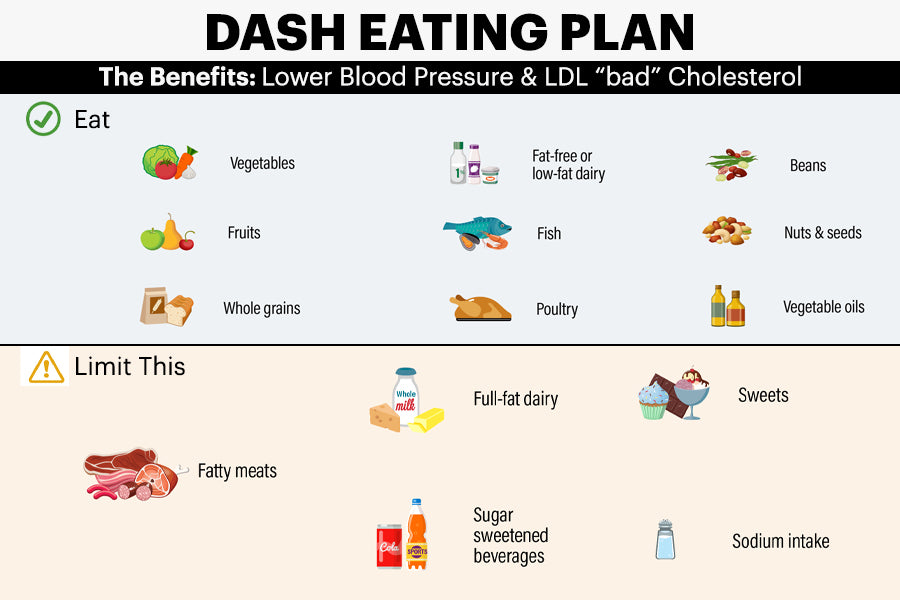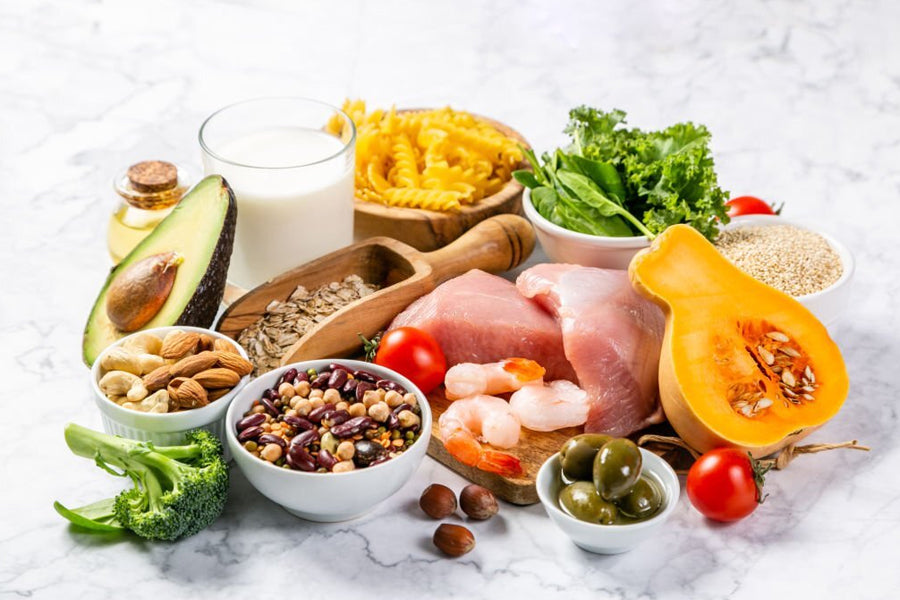Hypertension is a severe condition that can lead to heart disease, stroke, and other health problems. It is essential to identify the problem and find appropriate strategies to solve it. Managing hypertension is the key to reducing the severity of the problem and preventing its progression.
Hypertension is a leading cause of death and disability in the United States. If left untreated, hypertension can progress to the following problems:
- Heart attack
- Kidney failure
- Stroke
- Heart failure
- High cholesterol
- Vision loss
According to the World Health Organization report, the incidence of hypertension in adults has increased from 594 million to 1.13 billion. The age group that has hypertension is from 30 to 79 years. Out of these people, many still do not know that they have hypertension. The report also showed that hypertension is the leading cause of premature death.
Most cases of hypertension are preventable or manageable with lifestyle changes. Alongside pharmacological intervention, as suggested by WHO, it is crucial to make some lifestyle changes to manage hypertension. It is essential to monitor your salt intake and include physical activity to manage hypertension.
Related Article: Heart Health and Exercise
The dietary lifestyle also has a critical role to play in managing hypertension. The American Heart Association recommends following the DASH diet plan to control and manage hypertension. The dietary approaches to stop hypertension (DASH) diet plan have played an integral role in reducing the risk of coronary heart disease.
The DASH diet focuses on following a healthy lifestyle by including healthy and nutritious food options and cutting down on unhealthy foods. The following article will help you understand all about the DASH diet and how you can follow it to manage the risks of hypertension.
Related Article: 11 Evidence-Based Benefits of Omega-3 Fish Oil
Understanding DASH Diet

When your blood pressure is higher than 120/80 mm Hg, then there might be a chance that you have hypertension. However, to diagnose the problem correctly, it is best to monitor your blood pressure for some days. Along with pharmacological interventions, dietary habits also have a crucial role in managing and preventing the progression of the problem.
The DASH diet is a simple and easy-to-follow diet plan that can boost heart health and prevent hypertension. After diagnosis, you can follow the DASH diet plan to lower your blood pressure and prevent the risk of other heart diseases. The DASH diet focuses on eating healthy foods that may also offer other health benefits.
Related Article: 5 Risk Factors of Cardiovascular Diseases & How to Prevent It
Following are the recommendations to follow a DASH eating plan by the American Heart Association:
- Eating more fruits and vegetables
- Including whole-grain products
- Going for low-fat dairy products
- Eating more nuts, legumes and seeds
- Eating skinless poultry and fish
- Not eating high saturated and Trans fat foods
- Limiting red meat consumption
- Reducing sweet beverages and drinks
- Cutting down smoking and alcohol
- Limiting sodium intake
How Does the DASH Diet Help?

The DASH diet focuses on including healthier and nutritious food options that, along with managing hypertension, also have additional health benefits. It is declared one of the “Best Heart Healthy Diets.” The DASH diet significantly reduces the risk of hypertension and lowers LDL, which contributes to overall better heart health.
Since the DASH diet includes more fruits and vegetables, you will be getting a high dose of fiber and antioxidants. Fiber plays a critical role in reducing LDL and total cholesterol by binding to cholesterol molecules and preventing absorption. A high fiber diet also helps in controlling and managing weight effectively.
Obesity has a high correlation with hypertension and coronary heart disease. It is also considered a global epidemic. The DASH diet effectively reduces myostatin concentrations that induce obesity and is also connected with insulin resistance. In this way, controlling weight has helped manage hypertension.
Related Article: Diets Vs. Lifestyle Change for Weight Loss
High sodium intake is a significant risk factor that induces hypertension. The DASH diet emphasizes eating foods prepared with little or no salt. According to a report by AHA, dietary sodium reduction and physical activity helped prevent long-term hypertension. Sodium has a crucial role in inducing hypertension, and controlling sodium intake can help prevent the problem effectively.
The DASH diet also contains foods high in potassium, such as fruits and vegetables. According to research, increasing dietary potassium has played a significant role in reducing hypertension. Limiting trans and saturated fat also has an improved effect on hypertension.
Many people assume that high sodium intake is linked with hypertension. But, some other foods pose a severe risk to health, which is fat. Eating too much saturated fat is linked with a higher risk of hypertension. Research showed that a diet with normal sodium levels and polyunsaturated fat had a significant effect on reducing hypertension.
The DASH diet is the most refined approach to managing hypertension. It is a lifestyle and requires mindful modifications in diet that can result in healthier outcomes. It is essential to stick to the plan to see effective results. Along with reducing blood pressure, the DASH diet will have a significant effect on your overall health.
Servings Recommendations for DASH Diet

The DASH diet is primarily designed to control and manage hypertension. However, if you want to follow this program and want to lose weight simultaneously, it is best to set a daily calorie target. By staying within that target, you can lose weight and work on your health.
Following are the number of servings for each food group that will help you to stick to the DASH eating plan:
|
Food Group |
Daily Servings |
|
Grains |
6-8 |
|
Vegetables |
4-5 |
|
Fruits |
4-5 |
|
Low Fat Dairy |
2-3 |
|
Lean Meat, Fish, Poultry |
2 or Less |
|
Nuts, Seeds |
4 Per Week |
|
Fats and Oils |
2-3 |
|
Sweets |
4 Per Week |
7 Day DASH Eating Plan
The following sample DASH eating plan will give you an idea about designing your meals and food options.
Monday
Breakfast: 1 cup (90 grams) of oatmeal with 1 cup (240 ml) of skim milk, 1/2 cup (75 grams) of blueberries and 1/2 cup (120 ml) of fresh orange juice.
Snack: 1 medium apple and 1 cup (285 grams) of low-fat yogurt.
Lunch: Tuna and mayonnaise sandwich made with 2 slices of whole-grain bread, 1 tablespoon (15 grams) of mayonnaise, 1.5 cups (113 grams) of green salad, and 3 ounces (80 grams) of canned tuna.
Snack: 1 medium banana.
Dinner: 3 ounces (85 grams) of lean chicken breast cooked in 1 teaspoon (5 ml) of vegetable oil with 1/2 cup (75 grams) each of broccoli and carrots. Served with 1 cup (190 grams) of brown rice.
Daily Total: 1,205 calories, 65 g protein, 152 g carbohydrates, 40 g fiber, 42 g fat, 1,400 mg sodium
Tuesday
Breakfast: 2 slices of whole-wheat toast with 1 teaspoon (4.5 grams) of margarine, 1 tablespoon (20 grams) of jelly or jam, 1/2 cup (120 ml) of fresh orange juice and 1 medium apple.
Snack: 1 medium banana.
Lunch: 3 ounces (85 grams) of lean chicken breast with 2 cups (150 grams) of green salad, 1.5 ounces (45 grams) of low-fat cheese and 1 cup (190 grams) of brown rice.
Snack: 1/2 cup (30 grams) of canned peaches and 1 cup (285 grams) of low-fat yogurt.
Dinner: 3 ounces (85 grams) of salmon cooked in 1 teaspoon (5 ml) of vegetable oil with 1 cup (300 grams) of boiled potatoes and 1.5 cups (225 grams) of boiled vegetables.
Daily Total: 1,196 calories, 45 g protein, 160 g carbohydrates, 35 g fiber, 50 g fat, 800 mg sodium
Wednesday
Breakfast: 1 cup (90 grams) of oatmeal with 1 cup (240 ml) of skim milk and 1/2 cup (75 grams) of blueberries. 1/2 cup (120 ml) of fresh orange juice.
Snack: 1 medium orange.
Lunch: 2 slices of whole-wheat bread, 3 ounces (85 grams) of lean turkey, 1.5 ounces (45 grams) of low-fat cheese, 1/2 cup (38 grams) of green salad, and 1/2 cup (38 grams) of cherry tomatoes.
Snack: 4 whole-grain crackers with 1.5 ounces (45 grams) of cottage cheese and 1/2 cup (75 grams) of canned pineapple.
Dinner: 6 ounces (170 grams) of cod fillet, 1 cup (200 grams) of mashed potatoes, 1/2 cup (75 grams) of green peas, and 1/2 cup (75 grams) of broccoli.
Daily Totals: 1,200 calories, 70 g protein, 160 g carbohydrates, 33 g fiber, 33 g fat, 1,225 mg sodium
Thursday
Breakfast: 1 cup (90 grams) of oatmeal with 1 cup (240 ml) of skim milk and 1/2 cup (75 grams) of raspberries. 1/2 cup (120 ml) of fresh orange juice.
Snack: 1 medium banana.
Lunch: Salad made with 4.5 ounces (130 grams) of grilled tuna, 1 boiled egg, 2 cups (152 grams) of green salad, 1/2 cup (38 grams) of cherry tomatoes, and 2 tablespoons (30 ml) of low-fat dressing.
Snack: 1/2 cup (30 grams) of canned pears and 1 cup (285 grams) of low-fat yogurt.
Dinner: 3 ounces (85 grams) of pork fillet with 1 cup (150 grams) of mixed vegetables and 1 cup (190 grams) of brown rice.
Daily Totals: 1,181 calories, 58 g protein, 176 g carbohydrates, 46 g fiber, 36 g fat, 976 mg sodium
Friday
Breakfast: 2 boiled eggs, 2 slices of turkey bacon with 1/2 cup (38 grams) of cherry tomatoes, 1/2 cup (80 grams) of baked beans, and 2 slices of whole-wheat toast, plus 1/2 cup (120 ml) of fresh orange juice.
Snack: 1 medium apple.
Lunch: 2 slices of whole-wheat toast, 1 tablespoon of low-fat mayonnaise, 1.5 ounces (45 grams) of low-fat cheese, 1/2 cup (38 grams) of salad greens, and 1/2 cup (38 grams) of cherry tomatoes.
Snack: 1 cup of fruit salad.
Dinner: Spaghetti and meatballs made with 1 cup (190 grams) of spaghetti and 4 ounces (115 grams) of minced turkey. 1/2 cup (75 grams) of green peas on the side.
Daily Totals: 1,184 calories, 50 g protein, 166 g carbohydrates, 31 g fiber, 42 g fat, 1,322 mg sodium
Saturday
Breakfast: 2 slices of whole-wheat toast with 2 tablespoons (40 grams) of peanut butter, 1 medium banana, 2 tablespoons (16 grams) of mixed seeds, and 1/2 cup (120 ml) of fresh orange juice.
Snack: 1 medium apple.
Lunch: 3 ounces (85 grams) of grilled chicken, 1 cup (150 grams) of roasted vegetables, and 1 cup (190 grams) couscous.
Snack: 1/2 cup (30 grams) of mixed berries and 1 cup (285 grams) of low-fat yogurt.
Dinner: 3 ounces (85 grams) of pork steak and 1 cup (150 grams) of ratatouille with 1 cup (190 grams) of brown rice, 1/2 cup (40 grams) of lentils, and 1.5 ounces (45 grams) of low-fat cheese.
Dessert: Low-fat chocolate pudding.
Daily Totals: 1,200 calories, 83 g protein, 165 g carbohydrates, 33 g fiber, 35 g fat, 1,300 mg sodium
Sunday
Breakfast: 1 cup (90 grams) of oatmeal with 1 cup (240 ml) of skim milk, 1/2 cup (75 grams) of blueberries, and 1/2 cup (120 ml) of fresh orange juice.
Snack: 1 medium pear.
Lunch: Chicken salad made with 3 ounces (85 grams) of lean chicken breast, 1 tablespoon of mayonnaise, 2 cups (150 grams) of green salad, 1/2 cup (75 grams) of cherry tomatoes, 1/2 tablespoon (4 grams) of seeds and 4 whole-grain crackers.
Snack: 1 banana and 1/2 cup (70 grams) of almonds.
Dinner: 3 ounces of roast beef with 1 cup (150 grams) of boiled potatoes, 1/2 cup (75 grams) of broccoli, and 1/2 cup (75 grams) of green peas.
Daily Totals: 1,200 calories, 60 g protein, 169 g carbohydrates, 35 g fiber, 40 g fat, 1,700 mg sodium
Tips to Follow a DASH Diet
The DASH diet brings changes to your diet by adding more fruits and vegetables. For some people, it is hard to make a quick change. Hence, some tips will help you switch to a DASH eating plan gradually:
- Go for small and gradual changes. Do not try to impose things on yourself. If you are not habitual of eating fruits and vegetables, start by taking one serving.
- Do not rush things and have one step at a time. This will make sure that you stay motivated and stick to your plan.
- Always check food labels while purchasing any food. Make sure not to include foods that are high in fat and sodium.
- Get creative with your meals. Try working on food recipes to stay consistent.
- Make your plate colorful by adding foods from all food groups. Eat fruits as a dessert if you have a sweet tooth.
- Always try to include 30 minutes of physical activity. Start slow and increase the time gradually.
Final Words
The DASH diet is a great way to improve your overall health. The diet focuses on eating nutrient-rich foods low in sodium and unhealthy fats. This approach can help you lose weight, lower your blood pressure, and reduce your risk of heart disease.
The DASH diet recommends eating plenty of fruits, vegetables, whole grains, and low-fat dairy products. It also suggests limiting the amount of red meat and sweets you eat. If you follow the DASH diet, you can enjoy healthy, delicious meals that are good for you and your family.
Reading List
Article Sources
- “Health Threats from High Blood Pressure.” Heart.Org, https://www.heart.org/en/health-topics/high-blood-pressure/health-threats-from-high-blood-pressure.
- Hypertension. https://www.who.int/news-room/fact-sheets/detail/hypertension.
- Grillo, et al. “Sodium Intake and Hypertension.” Nutrients, vol. 11, no. 9, Aug. 2019, p. 1970. org (Crossref), https://doi.org/10.3390/nu11091970.
- Pescatello, Linda S., et al. “Physical Activity to Prevent and Treat Hypertension: A Systematic Review.” Medicine & Science in Sports & Exercise, vol. 51, no. 6, June 2019, pp. 1314–23. org (Crossref), https://doi.org/10.1249/MSS.0000000000001943.
- Boston, 677 Huntington Avenue and Ma 02115 +1495‑1000. “Diet Review: DASH.” The Nutrition Source, 16 Jan. 2018, https://www.hsph.harvard.edu/nutritionsource/healthy-weight/diet-reviews/dash-diet/.
- Talaei, Mohammad, et al. “DASH Dietary Pattern, Mediation by Mineral Intakes, and the Risk of Coronary Artery Disease and Stroke Mortality.” Journal of the American Heart Association, vol. 8, no. 5, Mar. 2019, p. e011054. org (Atypon), https://doi.org/10.1161/JAHA.118.011054.
- “High Blood Pressure Symptoms, Causes, and Problems | Cdc.Gov.” Centers for Disease Control and Prevention, 18 May 2021, https://www.cdc.gov/bloodpressure/about.htm.
- The DASH Diet: A Common Sense Approach to Healthy Eating http://heart.ucla.edu/workfiles/Adult_Congenital/thedashdiet.pdf
- NIH-Supported DASH Diet Tops Rankings for “Heart-Healthy” and “Healthy Eating” | NHLBI, NIH. https://www.nhlbi.nih.gov/news/2021/nih-supported-dash-diet-tops-rankings-heart-healthy-and-healthy-eating.
- Brown, L., et al. “Cholesterol-Lowering Effects of Dietary Fiber: A Meta-Analysis.” The American Journal of Clinical Nutrition, vol. 69, no. 1, Jan. 1999, pp. 30–42. PubMed, https://doi.org/10.1093/ajcn/69.1.30.
- Wahab, Abdul, et al. “Obesity, Systemic Hypertension, and Pulmonary Hypertension: A Tale of Three Diseases.” Current Problems in Cardiology, vol. 46, no. 3, Mar. 2021, p. 100599. ScienceDirect, https://doi.org/10.1016/j.cpcardiol.2020.100599.
- Perry, Cydne A., et al. “Decreased Myostatin in Response to a Controlled DASH Diet Is Associated with Improved Body Composition and Cardiometabolic Biomarkers in Older Adults: Results from a Controlled-Feeding Diet Intervention Study.” BMC Nutrition, vol. 8, no. 1, Mar. 2022, p. 24. Springer Link, https://doi.org/10.1186/s40795-022-00516-9.
- Grillo, et al. “Sodium Intake and Hypertension.” Nutrients, vol. 11, no. 9, Aug. 2019, p. 1970. org (Crossref), https://doi.org/10.3390/nu11091970.
- He, Jiang, et al. “Long-Term Effects of Weight Loss and Dietary Sodium Reduction on Incidence of Hypertension.” Hypertension, vol. 35, no. 2, Feb. 2000, pp. 544–49. org (Atypon), https://doi.org/10.1161/01.HYP.35.2.544.
- Sacks, Frank M., et al. “Effects on Blood Pressure of Reduced Dietary Sodium and the Dietary Approaches to Stop Hypertension (DASH) Diet.” New England Journal of Medicine, vol. 344, no. 1, Jan. 2001, pp. 3–10. Taylor and Francis+NEJM, https://doi.org/10.1056/NEJM200101043440101.
- Houston, Mark C. “The Importance of Potassium in Managing Hypertension.” Current Hypertension Reports, vol. 13, no. 4, Aug. 2011, pp. 309–17. Springer Link, https://doi.org/10.1007/s11906-011-0197-8.
- Smith-Barbaro, Peggy A., and George J. Pucak. “Dietary Fat and Blood Pressure.” Annals of Internal Medicine, vol. 98, no. 5_Part_2, May 1983, pp. 828–31. org (Atypon), https://doi.org/10.7326/0003-4819-98-5-828.











